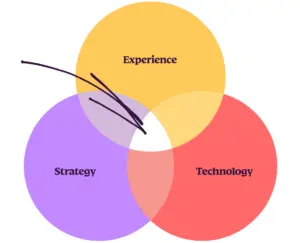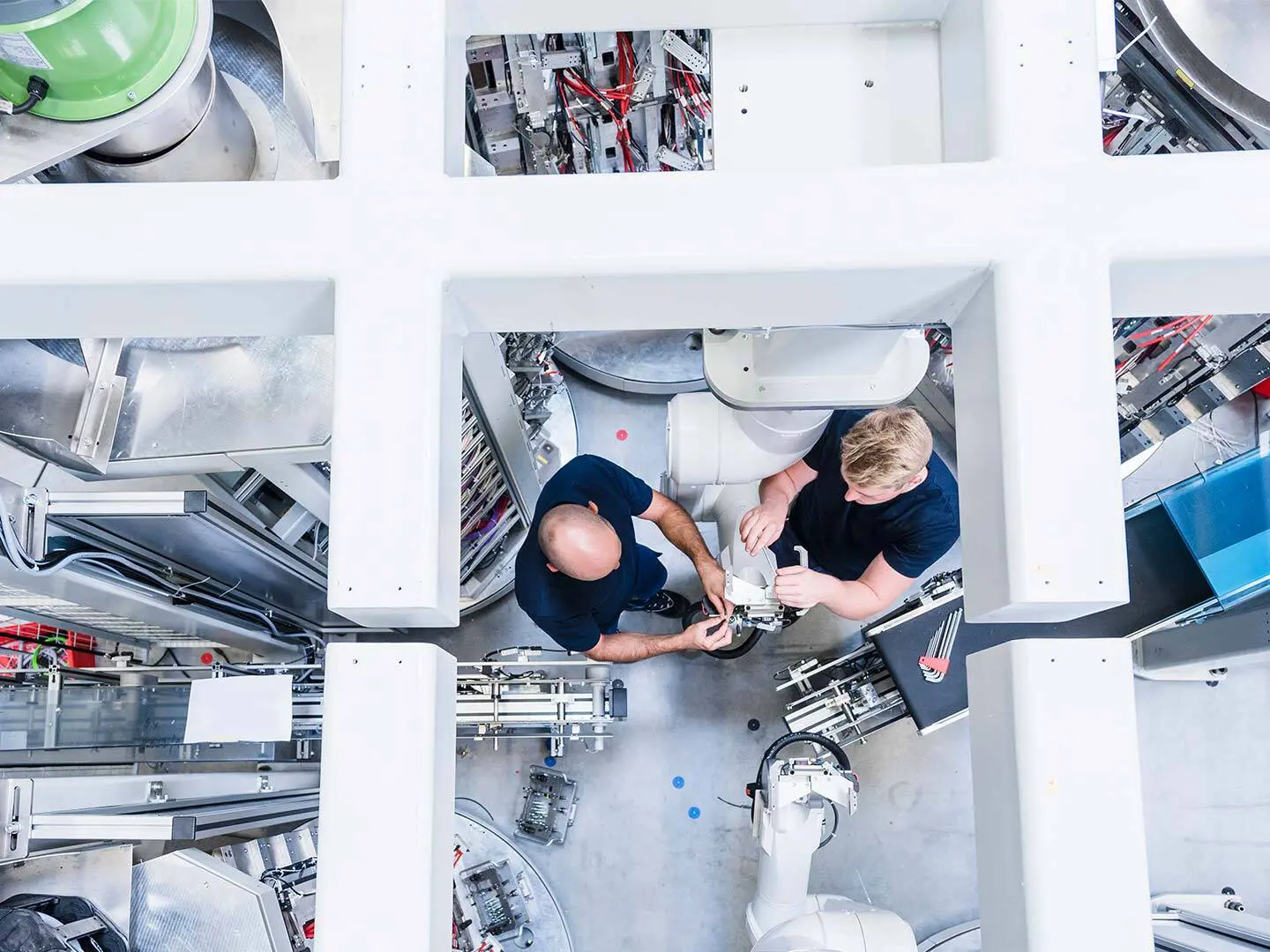A Look at the Past, Present, and Future
On a recent trip to Minneapolis, I was walking downtown towards our office in the TractorWorks building and reflecting on what downtown must have been like when it was a manufacturing and distribution center. As I passed the Maytag building, I thought about the presence of a warehouse and showroom in that spot and how that is now a remnant of the past.
What caused the demise of small-scale manufacturing and distribution facilities?
Technology often does not solve fundamental human problems, but it reduces the friction of place, time, and distance, leading to an accelerant effect.
In this article, I explore the long-term effects of this and how, at Vervint, we understand the power of mutually supporting innovations that create tremendous value for people and organizations while delivering a sustainable competitive advantage.

What We Do
We work with people, empowering them and their organization with purpose.
The Human Factor in Manufacturing Changes
Throughout time, distribution systems evolved through more efficient trucking, the national highway system, and container shipping, making it easier to move goods. Coupling that with large-scale IT innovation in the supply-chain space led to the global supply-chain revolution along with all the social implications involved in creative job development and local business destruction.
Due to this, Maytag and many other companies didn’t need a local warehouse or showroom in downtown MSP. It was inefficient and no longer aligned with the best practices in their industry. Many small companies went out of business, and consolidation occurred.
So, the question that arises is, why?
Communication and information technology allowed for massive optimization through scalable capabilities that were concentrated in the largest firms. And Maytag was acquired by Whirlpool in 2006.
These simultaneous changes in transportation and IT accelerated the changes that removed the friction of place and time.
A Time of Disruption
Once you see a pattern from the past, you can begin to anticipate the changes that may be coming and places of disruption in the near future. There will be new areas for cost optimization and opportunity creation, not directly from tech, but as people and organizations begin to disrupt the market by using the technology.
You will first see these disruptions in spaces with the closest proximity to the innovation, for which the “new” is a direct replacement of the “old.”
For example, look how some people are concerned about students using ChatGPT. Since education is fundamentally about knowledge, content assimilation, and utilizing synthesis to measure comprehension and critical thinking, using LLMs (large language models) directly affects the core of this part of the educational process.
Other prominent places of disruption would be middle management and employees who collect and synthesize information and perform aspects of coordination in legal, document management, etc.
As the futurist Roy Amara once said, “We tend to overestimate the effect of technology in the short run and underestimate the effect in the long run.” Makes me wonder, did we anticipate communication and information management technologies to cause the large-scale destruction of local jobs in manufacturing and distribution? Not likely, but it is a classic example of long-term effects that are often underestimated.
For instance, look at places of friction where time, space, place, or availability of information becomes a constraint. Sometimes, that friction is a positive thing, introducing a lag in time for wisdom to prevail and words to remain unsaid. The absence of this kind of friction can lead to new forms of social churn.
When this friction introduces cost in time or money, removing that will be viewed as an opportunity, likely leading to a new business model or marketing offering — especially when mutually supporting innovations can be implemented together.
That’s why Vervint is committed to leading innovation from the heart of strategy, technology, and experience. We help companies bridge the gap between strategic aspiration and technical accomplishment, supporting innovation that empowers people and organizations to thrive in an experience-driven world.

The Benefits of Hiring a Digital Consultancy or Tech Consultants
Embrace Innovation with Vervint
We meet people and organizations where they’re at to take them where they want to be. Get in touch, and we’ll help move you toward a more innovative future.


